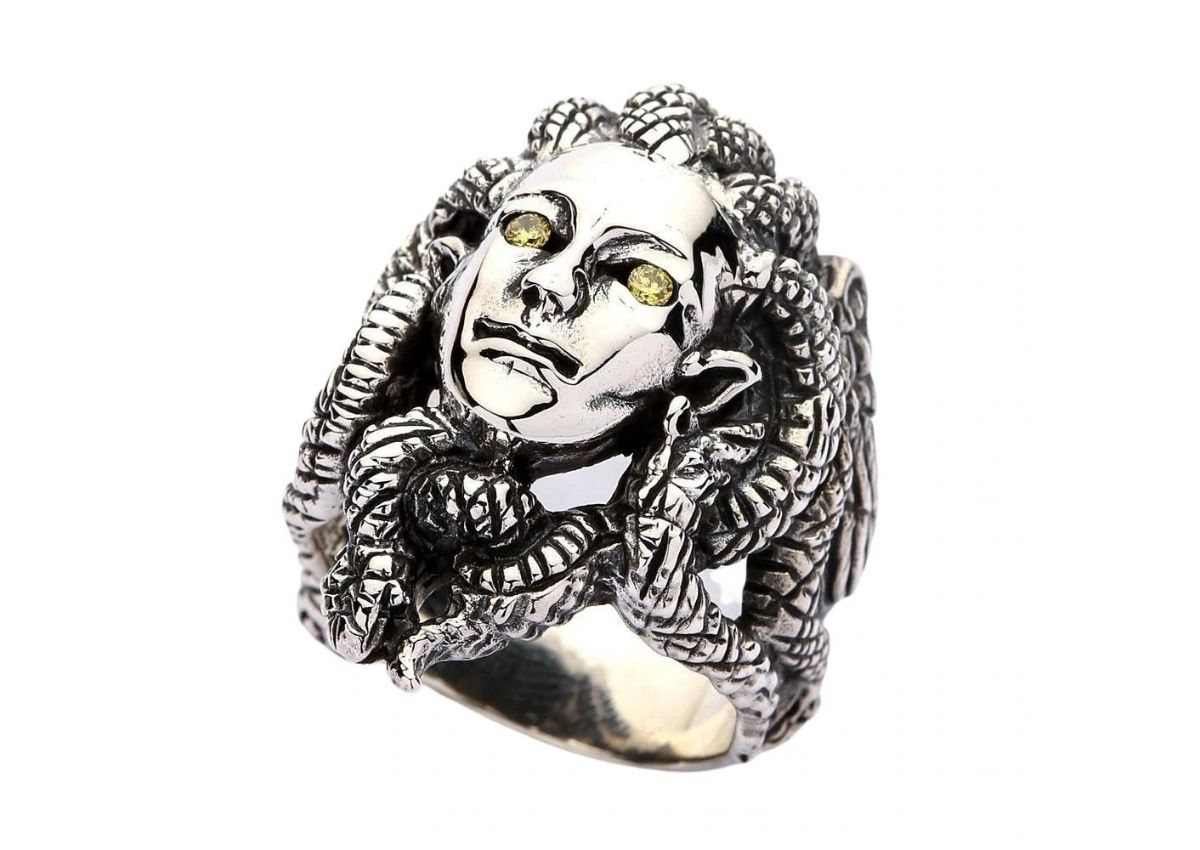

Gothic Jewellery in a Nutshell: Its Inspiration and Meaning. Image credit: Supplied
It is a product of Christianity, but a range of its symbols came from other cultures and religions, and some of them are considered to be anti-Christian whatsoever. Be that as it may, not many people understand what Gothic is, so it’s time to put an end to ignorance and deal with this complex but intriguing phenomenon.
The cross is one of the central elements of the Gothic style. Some take this choice as a mockery, but in fact, everything is simpler – Gothic is really religious. At least, the cradle of the Gothic is the pompous cathedrals and churches built in the Middle Ages. Medieval times marked the starting point of Gothic’s history. Architects erected grandiose buildings to serve God. These majestic structures were intended to show how negligible a man is in comparison to the greatness of God. We still look with admiration at these masterpieces of human genius, although people of art during the period of Enlightenment called them Barbarian. Strictly speaking, the savage tribes of Goths gave the name to the style of architecture and applied art now known as Gothic.
Gothic architecture is not just grand, it is lavishly decorated in its every detail whether it is stucco, carving, gilding, stained glass inserts, etc. It displays an abundance of floral motifs (vines, roses, thorns, etc.) and each such pattern has its own religious connotation. For example, thorny plants symbolize the suffering of Christ. Now imagine that all these embellishments migrated from the walls of cathedrals into jewelry. This is what Gothic style basically is in a nutshell.
As you already know, Gothic jewelry took over the florid and ornamental features from its predecessors. Today we admire what was considered barbaric a few centuries ago. The beauty of Gothic is not only the complexity of lines and the quirkiness of symbols but, above all, its ability to combine colors. The dominant colors of this style are black, white, and gray. This color scheme is somewhat gloomy, so it comes as no surprise that it started being associated with mystery. That being said, you should not think that Gothic is monochrome. It’s full of colors; it’s just that these colors tend to be on the cold end of the spectrum. Blue, green, purple, and teal are the normal color gamut for Gothic. Yellow, orange, pink – these colors the style does not accept. The only warm color that Gothic has in place is red. It is like a link between colorless settings and scatterings of vibrant gems.
If you look at Gothic Cathedrals again, you will hardly notice the riot of colors. However, one glance at the stained glass windows is enough to understand where Gothic drew its inspiration from. Round stained glass windows in Gothic cathedrals are called Rose Windows, and their shape and color combinations are recreated in Gothic rings and pendants.
Gothic has gone through many changes throughout its history. Today, it is associated with something dark and mystical, and we have to thank dark Gothic novels for such a presentation of this style. Mystery has always attracted people, and Gothic has more than enough of this quality. Maybe that’s why it became one of the leading styles of the 20th century and is not going to slow down in the 21st century?
Anyways, the combination of black and white that refers to the darkness of the night and the cold light of the moon, as well as a number of mysterious symbols, gave Gothic a reputation as a dark art style. It displays ancient runes, patterns made of intertwined circles and figures, symbols taken from all over the world, be it the Celtic cross or the Egyptian ankh, as well as images that are commonly associated with pain and suffering. These are thorny plants, swords, daggers, drops of blood, wild beasts, etc. Even dragons in the Gothic interpretation become bloodthirsty monsters capable of inflicting destruction and pain. However, you should not think that people who carry such symbols want to harm others. By putting these images on the display, they show their willingness to fight their inner demons.
If there is evil, there must be good that overcomes it. If there is a dragon, there must be a knight wishing to battle the fire-breathing monster to save his princess. Dragons and knights are a popular motif of Gothic jewelry, a kind of Western yin and yang, in which one side represents pure evil, and the other is pure good. On top of the embodiment of good, knights are also romantic figures praising love and feelings capable of overcoming adversity. Themes of romance are not alien to Gothic. Therefore, hearts, touching hands, renderings of the Claddagh rings, flowers, and other symbols of love are so common for this trend. Sometimes this love is tragic – a broken heart or a heart pierced with a dagger shows that there is no happily ever after sometimes – but it is always beautiful and oozing nobility.
Here are just a few facets of such a complex and mesmerising phenomenon that is Gothic. Now that you understand it a little better, your accessorising efforts can take on new meaning.